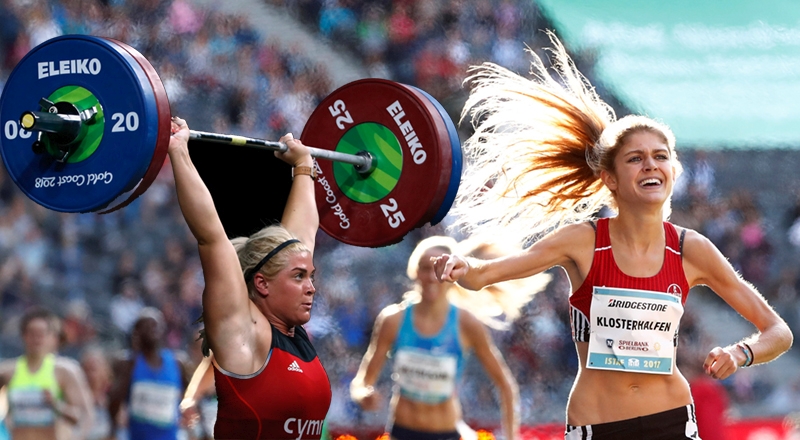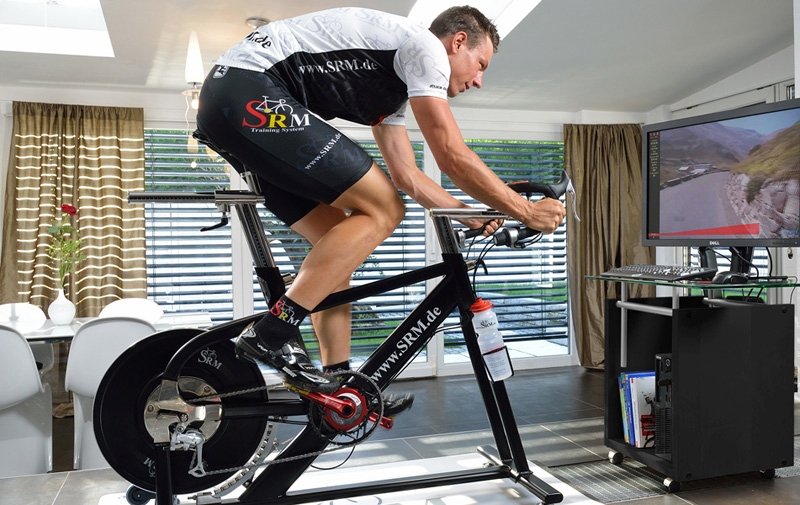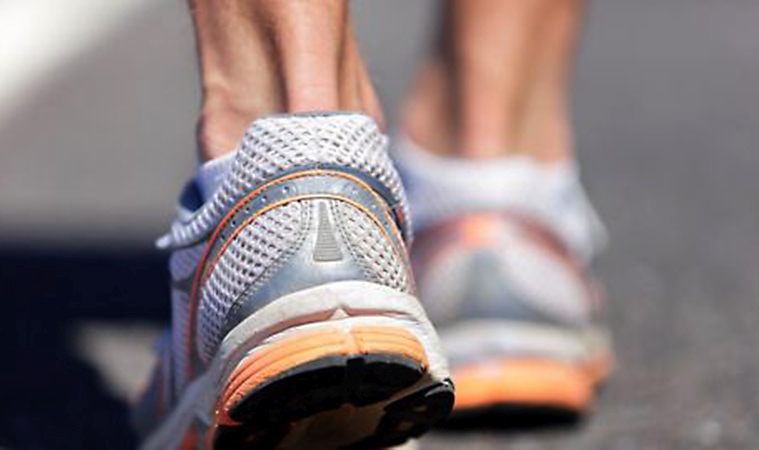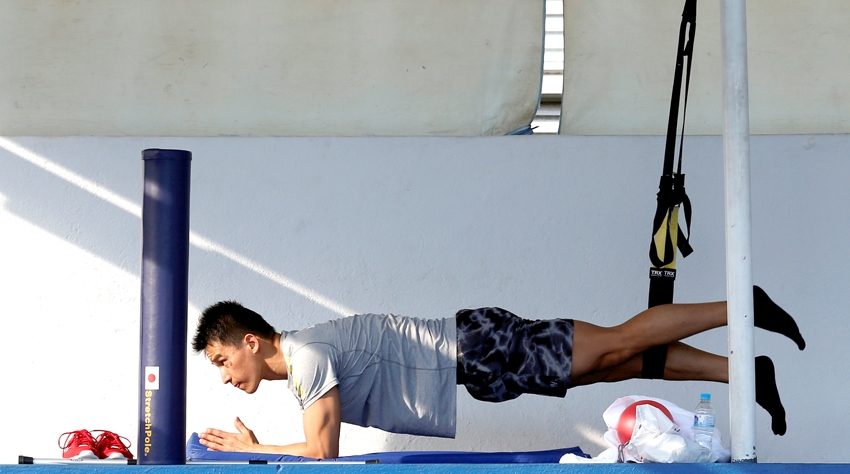You are viewing 1 of your 1 free articles. For unlimited access take a risk-free trial
Power and glory: why athletes seeking a PB neglect strength training at their peril
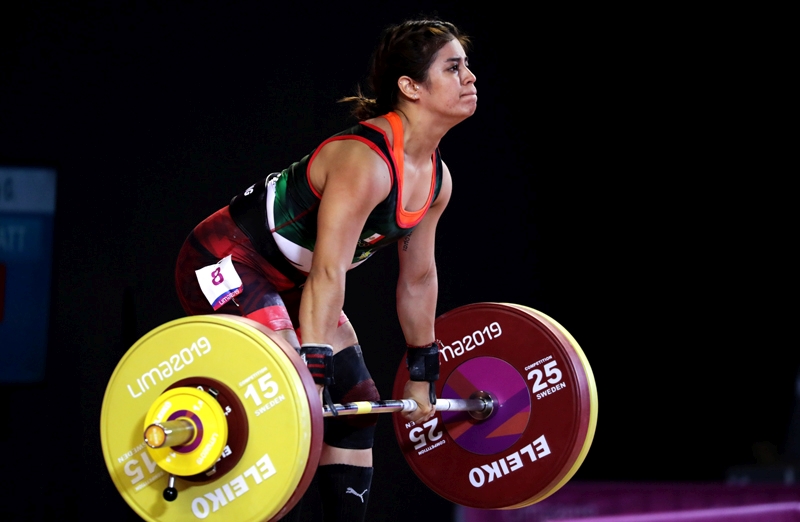
US sports scientist and endurance coach Tom Whipple explains why athletes seeking a PB neglect strength training at their peril…
What would you consider to be the most important quality for an endurance athlete to develop in order to optimise performance? ‘Great oxygen carrying capacity’ (V02 max) or ‘the ability to preferentially metabolise fat burning for energy’ are common replies. It may surprise you to know however that despite all the attention paid to physiology and metabolism, something else is more important. The answer is strength. Elite coaches understand that strength, and its manifestations - power, speed, and muscle economy (how efficiently muscles work) are more closely related to performance than any other quality.
Although it may seem an odd concept, experts in the field of endurance performance have long argued this to be the case; here are just a few quotes:
- George Dallam, PhD, Olympic Triathlon Coach – “Strength is the most fundamental limiter on performance and is essential for whatever distance you are competing.”
- Ed McNeely, Physiologist, International rowing coach – “Outside of technique, the one physical factor that is emerging as being the best predictor of rowing performance is peak power.”
- Owen Anderson, PhD, Author, Coach – “Improving one’s maximal speed over short distances will almost automatically lead to upgraded race performances in endurance events.”
Strength and power defined
Strength is defined as the amount of force generated in a specified movement pattern; usually a push, pull, or landing task. Sport scientists quantify it with a force plate or dynamometer while coaches measure it in the weights room. Power is the term used to describe the rate at which work is being done. Accordingly, power is increased when more work is done in less time. With that in mind, let’s answer some key questions:- How are peak strength, power, and speed measured in endurance athletes? Well, the greatest amount of weight lifted, watts produced, or top sprint speeds are the benchmarks. These results are often described as an athlete’s ‘peak anaerobic’ or ‘neuromuscular capacity’. Neuromuscular capacity refers to the level of activation between your central nervous system and muscles. Surprisingly, greater strength is the consequence of maximising your brain-muscle connections; it is independent of your muscles’ girth.
- How closely do these tests predict performance at longer distances? In one study of trained runners, jumping ability and 300-meter sprint time explained 78% of the variance in 10km running performanceJ Strength Cond Res. 2001 Nov;15(4):405-412. Perhaps even more compelling is that strength gains may be MORE important than the number of meters or miles logged during a training period. Another study found that when the weekly mileage of well-trained runners was reduced (by about 30%) and replaced with strength training, significant improvements in economy and 5km times occurredJ Appl Physiol. 1999 May;86(5):1527-33.
- Via what mechanism does strength improve performance? Consider the following scenario: You need to hire someone to carry a 25kg package to the seventh floor of a building with no elevator. Your first candidate is a triathlete whose VO2max was world class while his grip strength was an underwhelming 20kgs. The second applicant is a manual labourer who had never heard of VO2; his grip was like a vice. Which person would perform better, with a lower perception of effort, and be durable enough to return to work the following day? Strength makes any performance easier and more likely to be sustained. Performance is improved as a result of the ability to generate greater propulsive force with a lower perception of effort (economy).
The right strength approach
Resistance (weight) training is a great way to improve strength. However, many endurance athletes engage in forms of resistance exercise that are not designed to improve peak strength. Therefore, if your current strength training programme involves some or all of these features, consider making a change:- Programmes that involve light weights
- Programmes that divide the body into isolated parts
- Programmes that involve training to the point of exhaustion,
- Using resistance to facilitate movement patterns rather than isolating single muscle groups
- Limiting the number of exercises you perform to a few basics
- Using resistance loads that are high but keeping repetitions low
- Challenging your strength boundaries - but never training to failure
FIGURES 1-3: GOBLET SQUAT (BELOW), DEADLIFTS (MIDDLE) AND KETTLEBELL SWINGS (RIGHT)
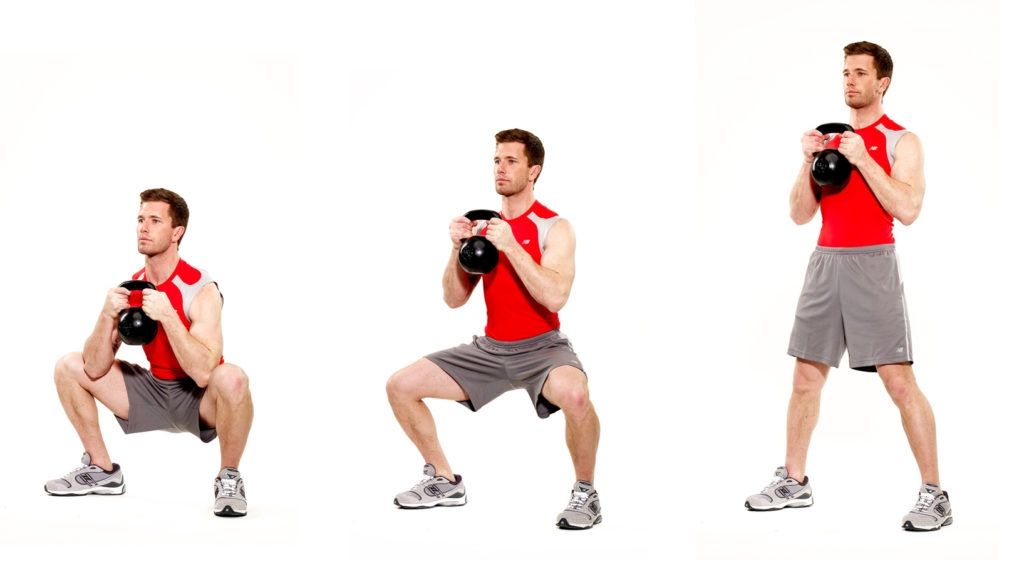
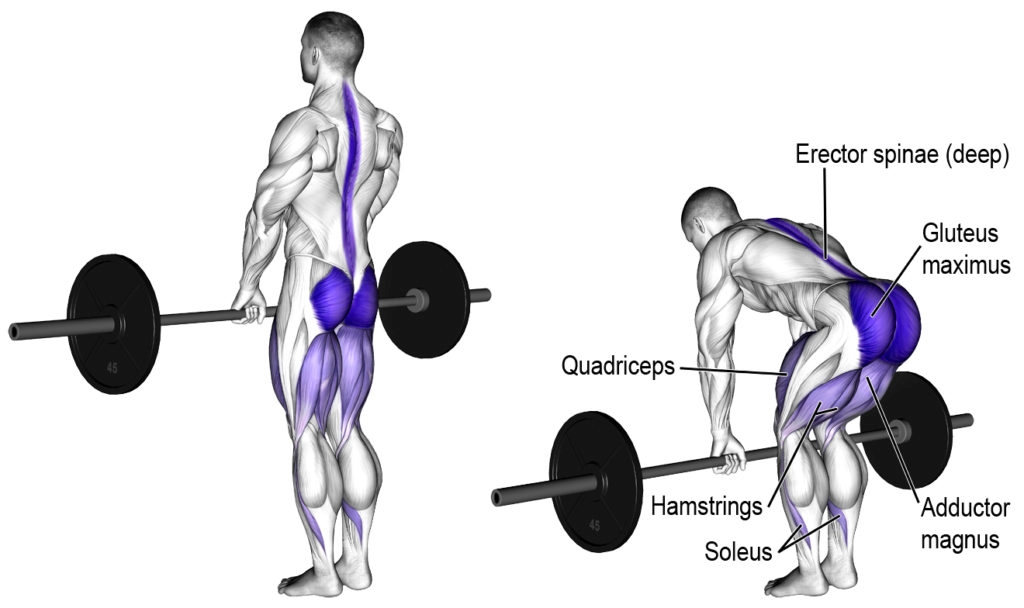
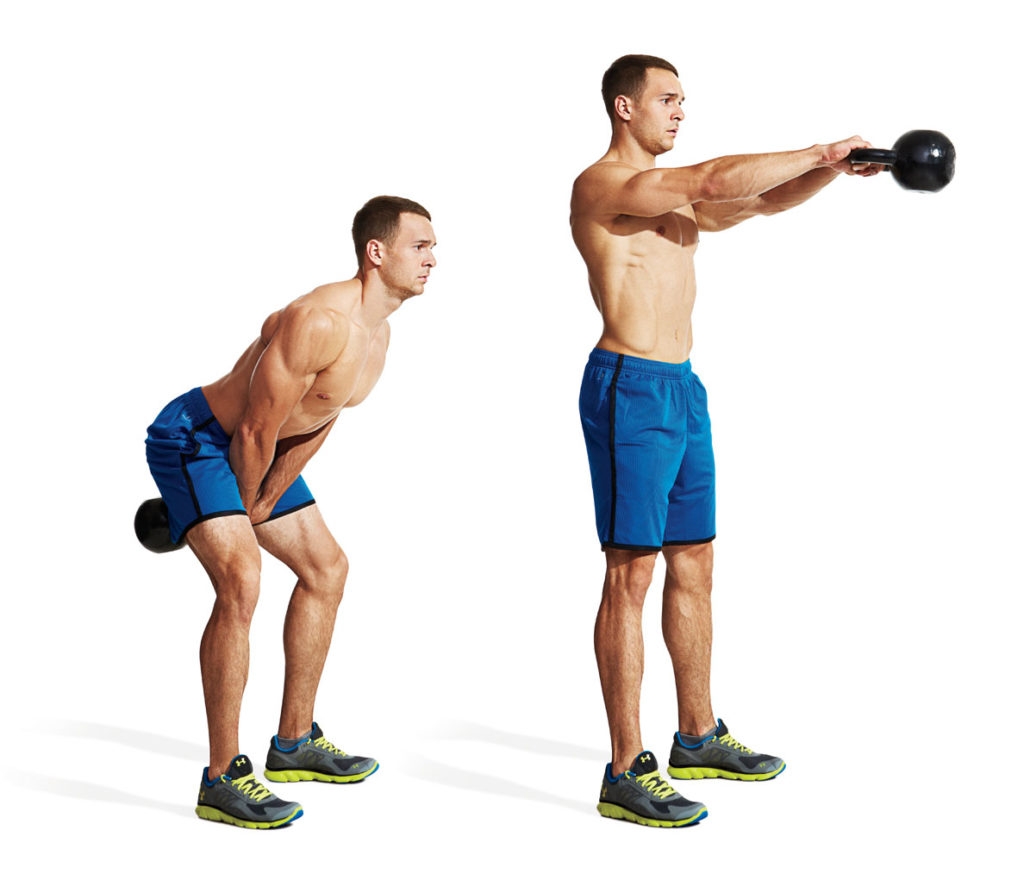
In searching the strength science literature, and studying the programs of successful athletes, a common range of sets and repetitions emerge. The total number of sets per session is less than five; the number of repetitions per set is less than ten.
Optimal sets and repetitions
In searching the strength science literature, and studying the programmes of successful athletes, a common range of sets and repetitions emerge. The total number of sets per session is less than five; the number of repetitions per set is less than ten. Total rep counts per session or per week are generally more important than whether you are performing 3 sets x 5 reps or 5 sets x 3 reps. There will tend to be an inverse relationship between training frequency and the number of repetitions performed in each session. As such, a programme that is performed 1-2 times per week may involve a similar number of weekly repetitions as a programme that is performed more often. Table 1 gives an example of this principle.In general, distributing your strength training through the week is a better strategy. This method improves your lifting skill, reduces the likelihood of muscle soreness, and will be more likely to improve the quality of your sport-specific training through a ‘potentiating effect’ (potentiation refers to a window of improved performance immediately after a heavy but non fatiguing weight lifting session). My former professor and subject expert, Vladimir Zatsiorsky, recommends that athletes “Train as heavy as possible, as often as possible, while staying as fresh as possible”. This seems contradictory - how can you train heavy, frequently, AND maintain freshness? The answer is by limiting your exercises, training more frequently with fewer repetitions, and perhaps most importantly, AVOID TRAINING TO FAILURE
TABLE 1 COMPARISON OF TOTAL WEEKLY REPETITIONS 2022 10 04
| Sessions per week | Monday | Tuesday | Wednesday | Thursday | Friday | Saturday | Sunday | Total Reps |
|---|---|---|---|---|---|---|---|---|
| Two | 3x10 | 3x10 | 60 | |||||
| Three | 4x4 | 4x4 | 4x4 | 48 | ||||
| Four | 2x5 | 2x5 | 2x5 | 2x5 | 40 |
Strength training protocols of two, three and four sessions per week. 3 X 10 = three sets of 10 repetitions
The failure of failure
Why is training to failure undesirable? Consider the following experiment: Assume the standard push-up position and begin performing reps in a six-second cadence – one rep every six seconds. Continue until you can no longer maintain the 6-second criteria. Recover for less than one minute (this will be inadequate) and try again. For this set, maintain the cadence for as long as possible but then continue to do press ups until there is a break in technique or your body is no longer executing push-up like behavior. The slowing is related to the de-activation of working muscles by the brain. Your central nervous system is in effect putting the brakes on your performance. As a consequence, you are no longer working with the same number of muscle fibres, and those that continue to work are being overloaded and likely damaged.Now consider that becoming stronger is the result of training your nervous system to activate a greater number of muscle cells. If you perform repetitions beyond the point that you are forced to slow, or to failure, you are undermining peak strength development. Training to failure is common among bodybuilders whose goal is to purposefully induce muscle damage in hopes of developing larger but not necessarily stronger muscles. However, if your goal is to maximise strength and simultaneously minimise injury risk and unnecessary mass, you need to train without slowing or missing a rep.
Research confirms this; in a 2010 study, forty-three trained male rowers were matched and assigned to one of four groups that involved the same endurance training but differed on their strength protocolsMed Sci Sports Exerc. 2010 Jun:42(6): 1191-1199. The differences included both the number of exercises (four versus two) and whether they trained to failure or not. The groups that avoided failure demonstrated greater improvements in the weight room as well as rowing performance (power outputs over 10 strokes and in 20-minute tests) as compared to the groups that trained to failure.
Developing greater strength
Improvements in strength are made by training with loads that are likely to ‘coax’ the nervous system into recruiting greater numbers of muscle cells. This is achieved by lifting progressively heavier loads within the 1-10 repetition range. For those individuals that are strong enough, moving loads at faster speeds will further improve power. For most endurance athletes however, slow and controlled lifting speeds will suffice as low-gear strength is the known limiter of power (for additional reading on this topic, “search explosive strength deficit”).Training for strength is usually accomplished in cycles (linear, wave, step) that introduce greater loads in a progressive manner. Table 2 shows an example of a standard step cycle, and it may be used for any of the basic lifts. The initial loads should feel relatively easy and correspond to about 75% of your current 5 repetition maximum (5RM – the maximum weight you can lift using good form for five reps). In this example, we have assumed your previous best 5RM load is 100 pounds. This programme involves three training sessions per week; the cycle is eight weeks long.
TABLE 2 EIGHT WEEK STEP CYCLE FOR BASIC LIFTS 2022 10 04
| Timeframe | Session 1 | Session 2 | Session 3 |
|---|---|---|---|
| Week 1 | 4 X 3 @ 75 pounds (34kgs) | 4 X 4 @ 75 pounds | 4 X 5 @ 75 pounds |
| Week 2 | 4 X 3 @ 80 pounds (36kgs) | 4 X 4 @ 80 pounds | 4 X 5 @ 80 pounds |
| Week 3 | 4 X 3 @ 85 pounds (38kgs) | 4 X 4 @ 85 pounds | 4 X 5 @ 85 pounds |
| Week 4 | 3 X 3 @ 90 pounds (41kgs) | 3 X 4 @ 90 pounds | 3 X 5 @ 90 pounds |
| Week 5 | 3 X 3 @ 95 pounds (43kgs) | 3 X 4 @ 95 pounds | 3 X 5 @ 95 pounds |
| Week 6 | 3 X 3 @ 100 pounds (45kgs) | 3 X 4 @ 100 pounds | 3 X 5 @ 100 pounds |
| Week 7 | 2 X 3 @ 105 pounds (48kgs) | 2 X 4 @ 105 pounds | 2 X 5 @ 105 pounds |
| Week 8 | 2 X 3 @ 110 pounds (50kgs) | 2 X 4 @ 110 pounds | 1 X 5 @ 110 pounds |
Congratulations! You have now achieved a new personal best. Take a week off and then repeat a new cycle but this time starting at a slightly heavier weight (85 pounds). Cycles typically range from 4-8 weeks and can be planned to correspond with sport specific training blocks or competitions. The critical point is that in order for you to improve strength, progressively heavier loads must be lifted. You must also refrain from adding significantly greater volume or training to failure.
Bodyweight training
I am often asked if athletes can improve strength without using equipment. The answer is absolutely yes, and for those that travel extensively or do not have access to equipment, body weight training can be a good option. Several exercises (planks, push-ups, levers, squat forms, pull-ups) can develop excellent results provided they are cultivated with the principles outlined in this article - the most important being the development of progressively greater internal muscular force.Increasing the number of body weight squats you can perform from 10 to 50 does not usually translate into the type of strength that is associated with sport performance. Remember, in order to improve maximal strength, loads or exercises must be consistently manipulated so that you are working in the 1-10 repetition range and recruiting a greater number of muscle cells. Physical culturists specialising in body weight training utilise a number of techniques to make exercises more challenging. For example, a standard push-up can be made more challenging by elevating the feet (a stair case provides several tiers of progression); body weight squats can be advanced by working deeper or toward the single leg variety.
Attaining recognised strength standards
Are there recognised strength standards that you should aspire to? Yes. Absolute strength refers to the total amount of weight you can lift while relative strength refers to your lifting strength relative to your body weight. Top coaches understand that the point of diminishing return begins when an athlete can deadlift or back squat twice their own body weight. Until you have achieved this level of general slowspeed strength, there appears to be no clear benefit to engaging in sport specific strengthening, highintensity plyometric loading or attempting to move submaximal loads at faster speeds.The deadlift (DL – figure 2) is the king of the hinge pattern and challenges the body through both the horizontal and vertical planes. Squats tend to load the body in a more vertical manner. Of all the squat varieties, Dan John’s goblet squat (GS – figure 1) may be the best choice for many reasons including but not limited to its safety, learning curve, and simultaneous development of strength AND mobility.
Technical Considerations: For both safety and long-term development, mastery of lifting technique is paramount. Individual differences in anatomy (hip geometry, limb segment length etc) preclude the recommendation of a universal squat or deadlift technique. However, certain absolutes do exist and include the following:
- Training is done in the bare foot or minimalist shoe condition.
- A neutral spine is always maintained (‘long and strong’).
- The ability to brace the core muscles is adequately developed (including pelvic floor).
- The feet are ‘rooted’ into the floor, and the ankles do not collapse.
- Hip position is unique and individualised (most will be slightly externally rotated).
- When looking down, the kneecap should track the middle of the foot (between the second and third toes).
- The grip is maximally engaged.
- Full body tension is developed BEFORE and maintained during the lift.
- Breathing pattern and diaphragm stability are considered integral to the lift.
Hypothetical strength training schedules (1-4 sessions per week)
Table 3 shows some hypothetical training schedules that would be appropriate for endurance athletes. Employing the principle of Sherrington’s law of irradiation, you will notice that this schedule utilizes just two exercises – the deadlift and the goblet squat.TABLE 3 HYPOTHETICAL TRAINING SCHEDULE 2022 10 04
| Monday | Tuesday | Wednesday | Thursday | Friday | Saturday | Sunday | Total Weekly Reps | |
|---|---|---|---|---|---|---|---|---|
| Weekly strength | 3x6 GS3x5 DL | 33 +/- | ||||||
| 2x per Week | 2x4-6 GS2x5 DL | 2x4-6 GS 2x5 DL | 44 +/- | |||||
| 3x per Week | 1x8 GS6x1 DL | 2x6 GS 2x4 DL | 2x6 GS 2x4 DL | 54 +/- | ||||
| 4x per Week | 2x5-10 GS | 2x5 DL | 2x5-10 GS | 2x5 DL | 50 +/- |
NB: 3 X 6 = 3 sets of 6 repetitions; GS = Goblet Squat; DL= Deadlift.
Goblet squat
The goblet squat is a great opening strength exercise as it facilitates strength and mobility, with even a modest load. You can use the GS to improve movement competence in the squat pattern; especially useful for older athletes, as many will have lost their youthful range of motion. Restoring this functional movement pattern can have far reaching effects, including reducing the likelihood of many of the so-called ‘overuse’ injuries and improving balance. Early goals should focus on achieving a squat depth of at least parallel (hips and knees in the same plane) with body weight only before concerning yourself with heavier loading. Using the hands to assist with balance is a useful tactic before moving onto a full goblet squat (see below). Common starting loads for the GS are variable but body weight only is typical. With consistent training, a reasonable goal for a middle-aged female endurance athlete is 2 X 10 @ 50 pounds (22kgs) and for males, even higher. Coach Marty Gallagher, a 3-time World Master Powerlifting Champion, has developed a conversion table for the different squat styles. He has found that a 50-pound GS is the equivalent to a 115-pound (52kgs) front and 205-pound (92kgs) back squat. Table 4 shows the protocol that coach Gallagher recommends for developing the GS.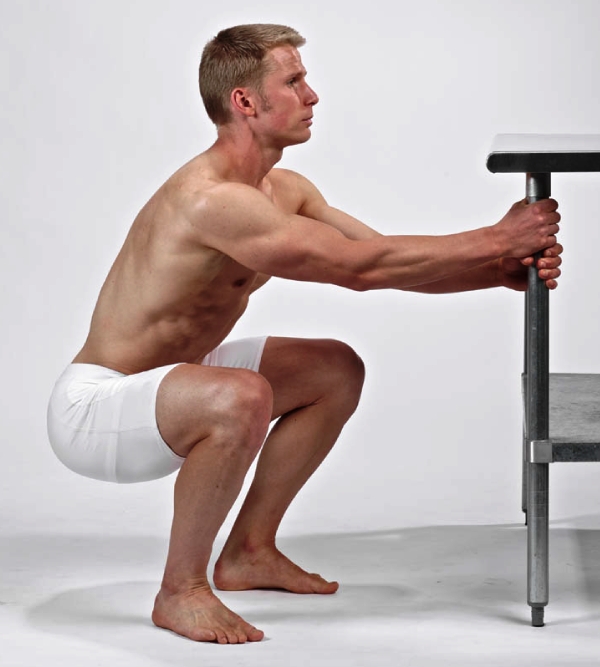

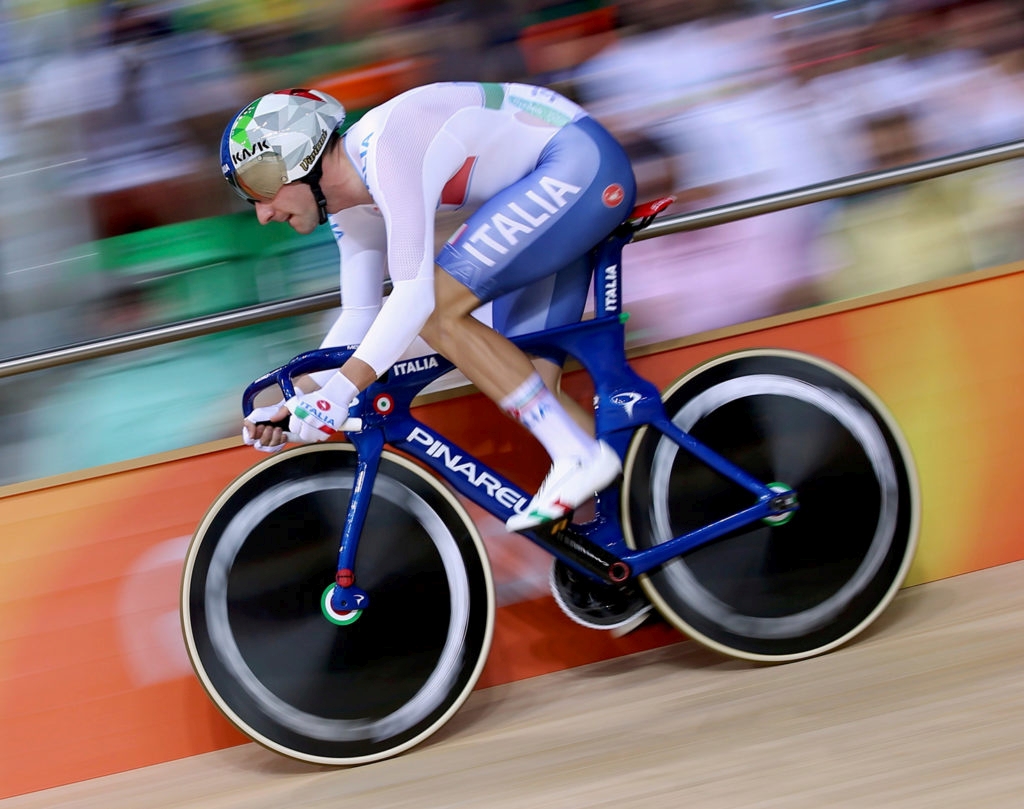
TABLE 4 GS DEVELOPMENT 2022 10 04
| Session | Load | Sets & Reps |
|---|---|---|
| 1 | 10lb | 3x3 |
| 2 | 10lb | 3x5 |
| 3 | 10lb | 3x8 |
| 4 | 10lb | 2x10 |
| 5 | 10lb | 3x3... repeat |
The Deadlift
The deadlift is believed by many to be the cornerstone of any strength development programme. Mastery of this hip-hinge movement is critical and takes some time for most (compared to a squat). Training the hinge movement by positioning a dowel (eg broom handle) along the spine’s length can provide useful feedback so that the neutral curves of the spine are maintained through the lift. There are three commonly defined deadlift techniques. The traditional style involves a narrow stance with hands outside of the knees; the sumo style involves a very wide stance with hands gripping the bar between the knee; and a modified sumo stance. The decision of what technique to utilise should be based upon your unique hip joint geometry, limb length, flexibility, and comfort. The hands may grip the bar in same or alternated manner (see figure 5). In addition to the technical elements that have been described, the most important safety consideration for the DL is the lock out in the standing position. It is critical that you engage the core muscle stabilisers to prevent the lower back from hyper-extending (see figure 6).FIGURE 5: DEADLIFT SUMO STYLE (WITH ALTERNATED HAND GRIP)
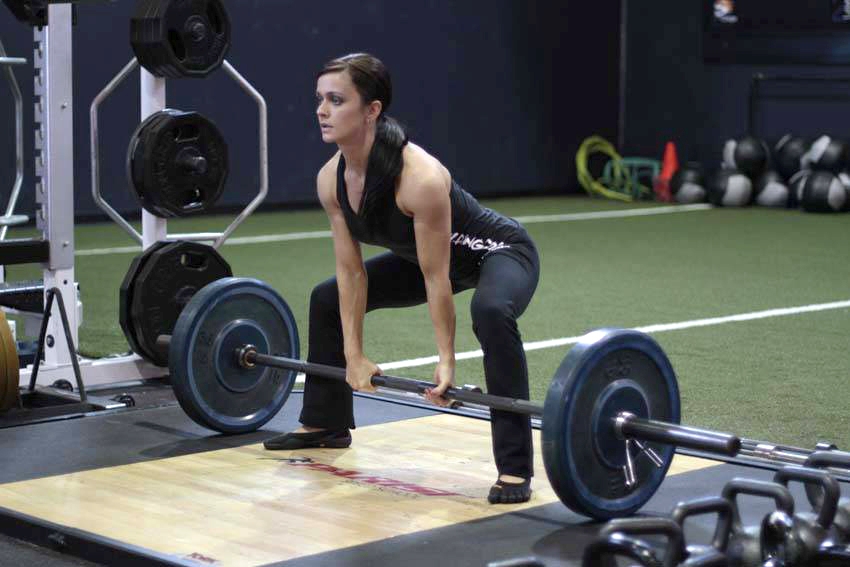
FIGURE 6: DEADLIFT LOCKOUT POSITION
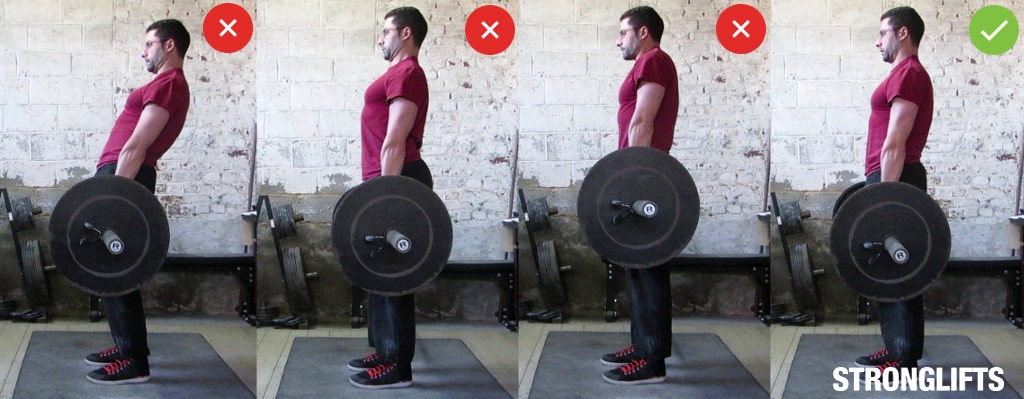
Key training points Finally, here are some key training points:
-
Select basic whole-body exercises such as the squat, deadlift, or both.
-
Develop a planned cycle of 4-8 weeks that progressively increases loads.
-
Training intensity should be above 70% of your personal best.
-
Spread your strength training over the week.
-
Avoid training to failure or performing sets with more than 10 repetitions.
-
Allow adequate rest between sets to minimise fatigue (more than 2 minutes).
-
Train strength prior to sportspecific endurance training.
-
Finish a strength session feeling stronger than when you started!
Newsletter Sign Up
Testimonials
Dr. Alexandra Fandetti-Robin, Back & Body Chiropractic
Elspeth Cowell MSCh DpodM SRCh HCPC reg
William Hunter, Nuffield Health
Newsletter Sign Up
Coaches Testimonials
Dr. Alexandra Fandetti-Robin, Back & Body Chiropractic
Elspeth Cowell MSCh DpodM SRCh HCPC reg
William Hunter, Nuffield Health
Keep up with latest sports science research and apply it to maximize performance
Today you have the chance to join a group of athletes, and sports coaches/trainers who all have something special in common...
They use the latest research to improve performance for themselves and their clients - both athletes and sports teams - with help from global specialists in the fields of sports science, sports medicine and sports psychology.
They do this by reading Sports Performance Bulletin, an easy-to-digest but serious-minded journal dedicated to high performance sports. SPB offers a wealth of information and insight into the latest research, in an easily-accessible and understood format, along with a wealth of practical recommendations.
*includes 3 coaching manuals
Get Inspired
All the latest techniques and approaches
Sports Performance Bulletin helps dedicated endurance athletes improve their performance. Sense-checking the latest sports science research, and sourcing evidence and case studies to support findings, Sports Performance Bulletin turns proven insights into easily digestible practical advice. Supporting athletes, coaches and professionals who wish to ensure their guidance and programmes are kept right up to date and based on credible science.
